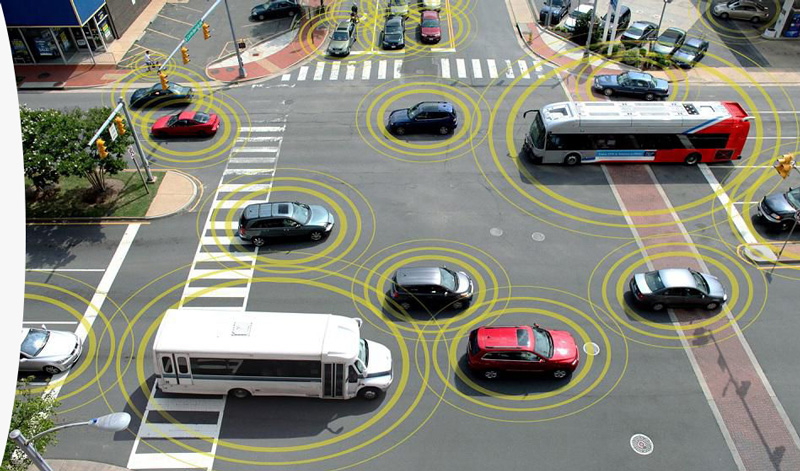Many companies and individuals use tracking and location systems like GPS to assist them while traveling, moving cargo across long distances, and much more. But, there’s a right and wrong way to leverage the power and control of such programs. Here are some commonsense guidelines for corporate fleets, private citizens, and groups of travelers to get the most out of GPS and similar technology while on the road.
Signs First, GPS Second
It’s far too easy to grow accustomed to on-dash devices that give voice directions and helpful hints to vehicle operators. Indeed, the compact, efficient devices are one of the wonders of modern science and have prevented untold numbers of people from becoming lost and stranded. However, there’s a major caveat that users need to remember. Caveat being, these devices are sometimes incorrect and occasionally don’t have the latest road information, like construction warnings, flood advisories, and recent hazard notifications. The signs first rule is a good one to follow. It’s about keeping your eyes on road signs and using your device as a secondary source of information. Always default to road signs if what they say conflicts with your geographic location unit tells you.
Commercial Fleet Management Systems

Source: manufacturing.net
Companies convey high value goods from point-to-point need tech that is more sophisticated than standard GPS programs. The most reliable products on the market include a full menu of telematics and vehicle tracking capabilities. If you’re unfamiliar with what these workhorse programs can do for fleet management, compare various offerings on this site to gain a fuller idea of what managers need and want in modern telematics systems. For starters, commercial organizations need much more detailed information than a simple location reading. Trucks often carry extremely valuable cargo, which means managers want to know things about engine performance, road conditions, driver alertness, time left to destination, and much more. Telematics products can deliver vast amounts of relevant information in real time and do so with near-total accuracy and reliability.
Enable Voice Guidance
Even if you’re a seasoned user of in-car guidance tech products, always take time to enable the voice guidance function. Doing so will leave your hands free to operate your vehicle while still being able to communicate with the unit and hear its responses as needed. There’s no sense in having to stop and squint at a screen to see simple directives or to use push-button input methods.
Use the Eye Level Rule
Unfortunately, a large number of casual users place their guidance units above or near the inside rearview mirror, which is often too high. The key to easy reading and viewing of the screen is to place it as close to your own eye level as possible. In some cases, that might entail adapting the gear to raise up or lower the screen to meet the eye level rule.
Practice Before Using

Source: klamathfallsnews.org
When GPS units first hit the market more than two decades ago, they were utterly simple products that were nothing more than glorified street maps that incorporated electronic guidance into a low memory computer program. Since their debut, however, the tiny, dash mounted boxes have grown in sophistication. Today’s direction and location tech offers audio/verbal instructions, constantly updated databases, and embedded safety programs to warn drivers of known road hazards and dangerously congested traffic patterns. It’s imperative for vehicle owners to spend a few hours, at least, practicing with new devices to learn about all the relevant features. In fact, it’s a good idea to practice around your own neighborhood and in areas you know well before driving on the highway or taking a long trip.
Don’t Miss Updates
Like most of the computer programs we’re all used to, driving tech is regularly updated by manufacturers. Be careful not to miss any updates. While you can usually go a few days or weeks ignoring your desktop computer’s warning about updates available, be sure to download GPS unit updates and new firmware as soon as it becomes available.
Trip Planning Is Essential
In the digital age, it’s easy to assume that computer programs can do it all and do every task flawlessly. Of course, that assumption is not even close to the reality of the situation. If you want to use a global positioning system on your next vacation or weekend road trip, don’t neglect the planning phase. Spend time online checking out your likely route and get used to street names, landmarks, and unique local features before departing.
Even if you plan a last-minute vacation you should still dedicate a period to research so you do not arrive and spend your whole trip struggling to navigate the destination. It can be highly frustrating and potentially dangerous to rely on your in-car unit while traveling through unfamiliar territory. Trip planning is the key to success because you’ll be ready for all the data the unit’s program throws at you as you navigate on new terrain.
The Buddy System Works

Source: tawasul.tech
If you have the luxury of a companion, use the buddy system for operating and reading the screen of your GPS system. Having an engaged co-pilot in your passenger seat is an excellent element to planning the perfect road trip no matter the distance or destination. Especially for new users, trying to look at a map, even an electronic one at eye level, can be a driving distraction and lead to loss of vehicle control. Taking advantage of competent assistance is one of the best ways to maximize the usefulness of the guidance systems.
Instinct Before Tech
Never rely on a machine’s directions over your own instinct. Often, the electronic voice coming from your GPS box will instruct you to turn, stop, or merge with traffic when doing so would put you in danger. In fact, most product instructions include a tip about not blindly obeying any verbal directive when the information seems illogical or downright dangerous. While tracking and positional tech is one of the most useful tech innovations in decades, it is far from infallible. Always keep an eye on road signs and use your own human intelligence to override a suggestion that doesn’t seem quite right. Getting the most out of this kind of technology means knowing when to use it and how to use it properly. The main rule is to rely on your own brain first and foremost and use technology as a second-tier solution.























